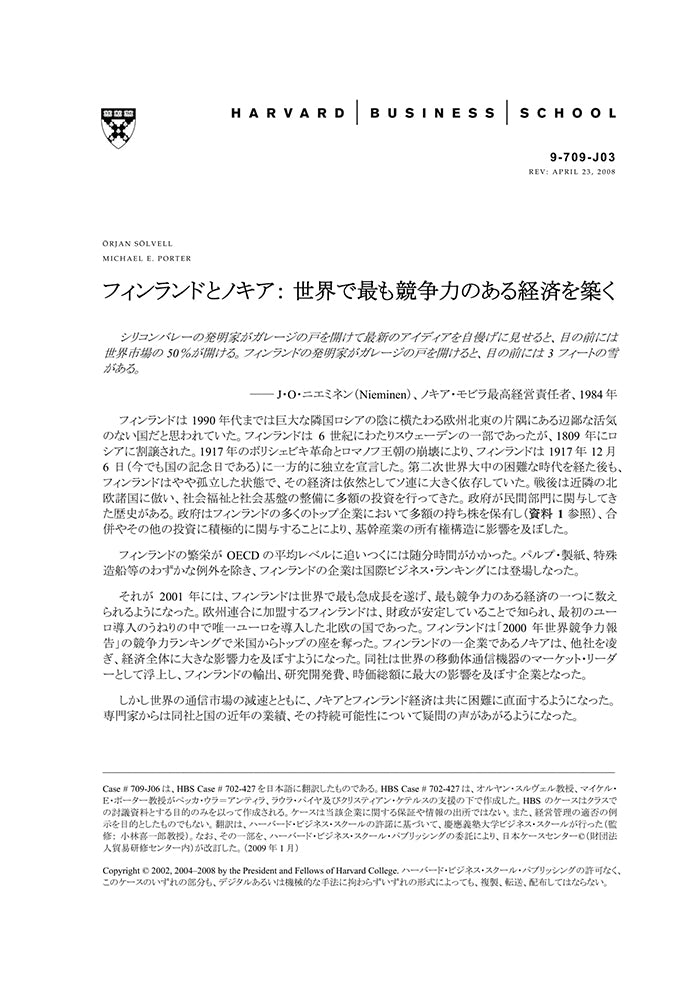フィンランドとノキア: 世界で最も競争力のある経済を築く
受取状況を読み込めませんでした
特有の言語と文化を持つフィンランドは、西(ノルディック地方とヨーロッパ)と東(特に隣国であるロシア)の間に位置する国として発展してきた。1980年代、投資主導の経済から脱却し、イノベーション主導の経済への移行を開始した。1990年前後のソビエト連邦の崩壊と共に、フィンランドも危機に陥った。このケースは、1990年代の政策変更と2002年までにフィンランドがどのようにして世界有数の競争力を持つ国になったかを説明している。この成功の大部分は、大規模な電気通信産業クラスター(特に携帯電話において世界的に大手でクラスター輸出の70~80%を占めるノキア)に起因する。このノキアも1990年前後には危機を経験している。 Finland, with a special language and culture, has developed as a country in between the west (the Nordic region and Europe) and the east (especially its neighbor Russia). In the 1980s, a process started of moving out of an investment-driven economy into an innovation-driven one. With the collapse of the Soviet Union around 1990, Finland reached a crisis. This case covers policy changes made in the 1990s and how, by 2002, the country had managed to become one of the most competitive in the world. A large part of the success could be attributed to the dynamic telecommunications cluster--especially Nokia, accounting for some 70% to 80% of the cluster exports and the world leader in mobile phones. Nokia also reached a crisis around 1990.
【書誌情報】
ページ数:23ページ
サイズ:A4
商品番号:HBSP-709J03
発行日:2002/1/25
登録日:2019/7/4

